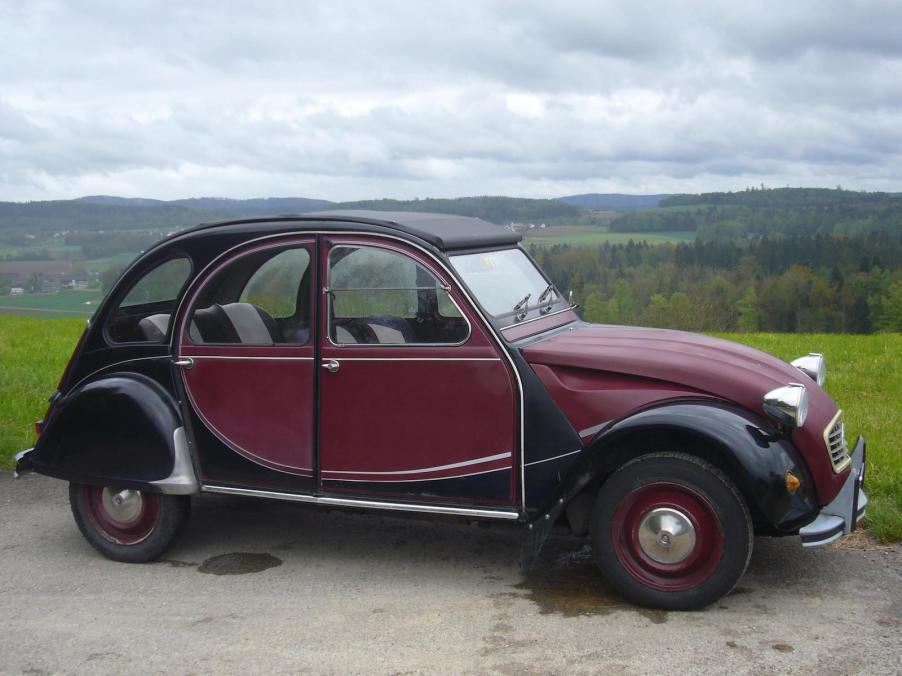
Rumor Has it The Tiny Citröen 2CV’s Gearing Dictated the Tour de France Stages
A gaggle of bicyclists are currently ripping around the French countryside in a spectacle that will make even an ironman triathlete self-conscious about their fitness. The first Tour de France was held in 1903, though in the route has changed a bit in the past 121 years. Rumor has it that the modern 20+ stage route, mapped out in 1947, is graded based on the gearing of Citröen’s adorable two horsepower 2CV.
Citröen first pioneered a front engine, FWD layout with its Traction Avant. But the expensive car did little to bring transportation to the masses. By WWII, a surprising number of French farmers still used horses and carts. So after the war, Citroën finally rolled out its budget-friendly and capable 2CV.
The car’s full name was the deux chevaux, which is French for “two horses.” The vehicle had two “taxable” horsepower. But don’t let the name fool you. Its BHP was rated at a mighty nine horsepower. I’ve ridden in a 2CV and am here to tell you, shifting isn’t optional.
The 2CV featured long-travel suspension because very little of France’s roads were paved yet. It also had a windshield-to-rear-bumper canvas sunroof. Once you folded it up, you could basically use the thing like a tiny truck. The roof also gave it the adorable nickname, “umbrella on wheels.”
While the 2CV’s engineering was relatively advanced, its bodywork and glass was all flat, to make it easier to repair. You can think of it as the VW Beetle of France. And it was the world’s first FWD car to sell more than a million units because it proved so popular all over the world.

As you can imagine, a nine horsepower first-generation Citröen 2CV would struggle with some of the hills the Tour de France bicyclists navigate in the Alps and Pyrenees mountains. On many of these hills you need to downshift severely. And, interestingly, they are categorized with “1” as the steepest. It is easy to imagine the Tour’s 1947 route planners in a little 2CV, grading each hill based on how many gears they had to drop. And this may be why this has been such a persistent myth.
The cycling publication Rouleur wrote, “Legend has it that the classifications were originally decided with a Citroën 2CV car, with the climb’s category judged to be the same as the gear necessary to motor up it.”
Rouleur interviewed Thierry Gouvenou, the Tour’s current race director, responsible for mapping the race route. He felt the legend was just that. “Perhaps the story came from a drunken night between journalists…In cycling we have so many stories like that that have been embellished over time. Maybe there’s some truth in it somewhere, but I’m not convinced.”
Gouvenou may be right. But my Tour de France headcanon will always include a team of sporting Frenchmen motoring around the countryside, planning the route of a race to reinvigorate their country after WWII, crawling up hills in a determined little 2CV so slowly it would be quicker to get out and pedal, and grading each climb based on the deux chevaux’s gear. Then stopping at the summit to let the poor thing cool down while enjoying a picnic and maybe a bottle of wine.



